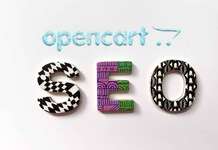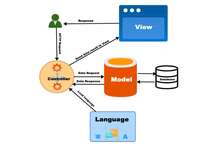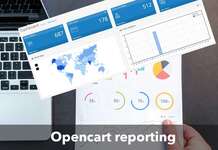App design was a priority for us from the beginning. It is the way we convey to the application user that we think of them so that the visible face of the app makes the code behind it attractive. It is an essential step before proper development and must provide support throughout the creation of the application.
App design is much more than painting the views of the application, application design has the great responsibility of structuring all the functionality of the app. To ensure a positive user experience, all the information has to be arranged hierarchically, with the displays’ smoothness being checked. And of course, then there is the fun part of studying the typical user and the applications in the sector to know what colors to use and what look and feel to achieve.
What is an App?
Digitization focused on mobile devices has been growing since mobile application stores opened back in 2008. But what is an app? What is the difference between a responsive website and a progressive web app?
An application is a kind of program made specifically for tablets and mobile phones. It is usually used instead of a website when the user needs to use the hardware components of the device (camera, geolocation, etc.). The responsive website and the PWA simply adapt to the device screen, but they lack some of the advantages that apps provide. Recognizing the unique benefits of mobile applications, businesses can enhance their digital presence by collaborating with a reputable mobile app development company. These companies specialize in leveraging the full potential of device hardware components, creating feature-rich and high-performance applications that offer a superior user experience compared to responsive websites or PWAs.”
What is the Design of Apps or Mobile Applications?
The design of mobile applications consists of structuring the navigation of the application based on the list of functionalities of the solution and defining the visual guidelines that will be applied to the different elements and screens.
Therefore, it guarantees, on the one hand, that the information is well structured and verifies that the navigation and functionality of the app flows correctly, ensuring an adequate user experience. On the other hand, it ensures that the look and feel of the app is in line with the brand’s style guide and is attractive to the type of user it is aimed at.
How to Design an App?
But how is app design done? It’s possible to describe the design process as going through several stages before arriving at a solution that meets the needs of the client:
In the first phase, you have to study the model user who will interact with the app so that the design adapts to their needs and preferences.
Next, the navigation map of the application is defined, defining the future screens and the actions associated with them.
Next, we create some versions of the same view with different look and feel to start defining the UI or user interface design of the app.
When the client validates the proof of concept, the rest of the views are designed, creating the final navigation map with the UX and UI applied, thus having the interface design completed.
UX-UI: interface design and user experience must go hand in hand in app design
The terms UX and UI are used interchangeably in the world of app design, but they must be treated differently and give each one the importance it deserves.
The design of apps is not only aesthetic; it includes a large number of decisions so that the app is accepted favorably by users. On the one hand, UX focuses the design with the user in mind, and on the other hand, the UI aims to optimize the external layer of the app. Our app design team plays a fundamental role in the creation of our client’s applications because for us it is essential that the user finds what they are looking for in an easy and intuitive way, causing such a degree of satisfaction that it makes them return to the application. At Sparkout, you can design your project from scratch, with our Design services.
In UX or User Experience
We put ourselves in the place of the final recipient of the application since the user must understand the structure of the app upon their first entry. We may not have another chance to attract you. When designing apps from this point of view we think about what we want the user to do during the duration of their session. All this should be done as simply as possible, so the user does not notice the UX work but at the same time does not miss anything. Everything is where the user intuitively believes it should be.
In UI or Interface Design
The effort is aimed at improving the view of the terminal and adapting it to the user experience. The presentation of this look and feel must pay special attention to the mobile platform. For this reason, our app design team works closely with our developers to provide the user with easy interaction with the device.
Adaptation of App Design to Each Mobile Platform
The design elements are different on different platforms and therefore users are accustomed to it even unconsciously. When designing apps we have to take into account at all times adapting to the user of each mobile platform.
Our app development is always carried out to be able to apply appropriate app design and usability to each platform. This is taken into account with the highest level of excellence when the design is for a native app
Types of App Design
The technology we will utilize to construct the application has an impact on its design as well. This is because the design of mobile applications must take into account the style guides of the main platforms, therefore it cannot be designed the same for an Android terminal as for an iPhone. But what when the development is the same for both platforms? What about the design?
Native Applications or Native Apps
Native applications are called that because they are native or specific to a single platform. As a result, native apps are developed using the language that each operating system recommends. If this is true for development, the same goes for design. The design of native apps requires perfect knowledge of the Android and iOS style guides to adapt to each of these operating systems so that the user feels natural to their platform.
Therefore, when designing native apps, a single design must be made for the Apple app and another for the Android app. This way, your users will find an application that is well adapted to their devices and with a look and feel to which they are accustomed.
Web Applications or Web Apps
Web apps work similarly to native apps and work on mobile devices. However, there are significant differences such as that webapps need the device’s browser to work. As for the design, although adequate, it does not usually present the exquisite usability that the design of native apps offers us.
The design will adapt well to all devices, including tablets, but there will be many similarities between them and therefore may not feel as natural as a native app.
Hybrid Applications or Hybrid Apps
In hybrid or cross-platform applications, the same programming language is used that works for both iOS and Android. This saves a lot of effort in the development part, but what about the design of hybrid apps? Well, something similar happens; less time is invested because a single design is usually made that works for both platforms. This on the one hand facilitates development, although, of course, it has the disadvantage that the user does not reach the level of perfection in terms of appearance that the design of native apps offers.
What Should the Design of Apps for Companies be like?
In order to ensure that the design of an app meets the demands and preferences of its target user base, organizations designing applications must, first and foremost, research the type of user that will engage with the app. However, you should also consider the company’s prior brand style standards.
As a result, in order to create a high-quality app design for businesses, we must gather the feedback that our clients send us and ascertain what the marketing department requires. Who is going to use the app, what ages they are, what work they are doing while using the app, etc. By thus knowing the context and preferences of the model user, we will achieve an app design with a magnificent user experience.
In the design of apps for B2C companies, as is the case of delivery companies, our objective will be to captivate the user with a careful hierarchy of information and the use of bright and attractive colors that make the use of the app appealing and that favor conversion and recurrence.
Advantages and Disadvantages of Apps for Companies
Apps for companies, if they are well conceptualized and fulfill the mission of managing a process more effectively than it was done before digitalization, always bring advantages.
On the one hand, the improvement in productivity, the operator takes less time if he can carry out operations without leaving his workplace.
It also leads to an improvement in production quality when the app focuses on reviewing parts of human labor.
It improves communication between middle management and those responsible because it can focus on people management, facilitating the work of the human resources area.
It streamlines commercial work and allows for faster conversion when deals can be closed without using paper and accessing the entire customer history.
And we could continue like this ad infinitum because in custom apps the advantage is always the solution it provides to the company. And no one knows better what solution they need than a client well advised by a technology partner specializing in app design for companies.
Best Mobile App Designs
The best app designs are those that are remembered by the user but that allows the application to incorporate images and elements without looking too saturated.
A good example of this is the delivery application we talked about before. Here, although green is a very striking color, its use in a flat way allows good integration with food photos and coexists well with light backgrounds.
The best app designs are also those that take into account the small details to make the application truly attractive. In these examples, we see how the icons for allergens, the backgrounds, and the striking colors are taken care of. It is important to work on the graphic line so that it is suitable for all audiences and easy to use. Collaborating with a reputable mobile application development company is essential to achieve such meticulous and appealing designs. These companies specialize not only in creating visually appealing interfaces but also in ensuring a seamless and user-friendly experience. By engaging with professionals in mobile app development, businesses can elevate the aesthetic appeal of their applications, making them visually engaging and accessible to a broad audience.
Conclusion
Though it goes beyond visual design, app design is one of the most crucial phases of app development. It is crucial that the design serves a purpose so that the user can comprehend it and carry out the desired tasks.






